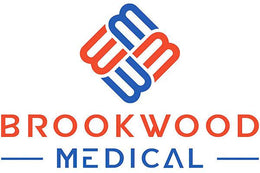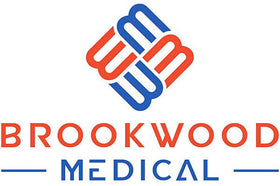Community Initiatives Supporting Mask Usage

Frequently Asked Questions
1. Why is mask usage still important post-pandemic?
2. What are KN95 masks and why are they recommended?
3. How are communities promoting mask usage?
4. What role do schools play in promoting responsible mask usage?
5. How can individuals provide feedback on community mask initiatives?
As we navigate through an evolving world post-pandemic, community initiatives aimed at promoting mask usage are more crucial than ever. The percentage of the population that still prefers or requires mask-wearing has spiked, and communities across the globe are rallying together to enhance public health. Among these initiatives are the distribution and promotion of comfortable KN95 masks for small faces, designed to create a secure fit while allowing for breathability. This article sheds light on various community-driven projects and highlights the importance of continued mask use.
Understanding the Need for Mask Usage
The COVID-19 pandemic ushered in a new era wherein mask-wearing became an essential part of our daily attire. While the urgency may have decreased, the need for protective measures against airborne illnesses remains. Masks serve as a barrier against respiratory droplets that can carry viruses, protecting both the wearer and those around them. Communities have recognized this need and are mobilizing to ensure that masks, especially comfortable KN95 masks for small faces, are readily accessible to everyone.
Why Focus on KN95 Masks?
Among the various types of masks available, KN95 masks stand out due to their filtration capabilities. These masks can filter at least 95% of very small (0.3 micron) particles, making them a popular choice for health professionals and everyday citizens. However, many individuals, particularly those with smaller facial structures, often struggle to find a comfortable fit, leading to gaps that can compromise their protective efficacy. Community initiatives that focus on providing comfortable KN95 masks for small faces have become instrumental in addressing this issue.
Successful Community Initiatives
Mask Distribution Programs
Across various cities, local governments and organizations are initiating mask distribution programs to help populations at risk or low-income communities. These programs aim not only to provide free masks but also to ensure they are of high quality and suitable for users' needs. Community volunteers often take part in these initiatives, organizing clothing drives or pop-up events that allow residents to pick up their comfortable KN95 masks for small faces along with essential supplies.
Educational Workshops
Education is as vital as mask distribution. Community partners are hosting workshops focused on the importance of mask-wearing, the proper way to wear them, and how to maintain hygiene. These workshops help dispel myths surrounding masks and encourage more widespread use. Participants leave with detailed knowledge on why choosing the right mask matters, particularly for those who struggle with fit. Finding the right mask, such as a comfortable KN95 mask for small faces, can enhance respiratory comfort and efficacy during exposure risks.
Support for Local Businesses
Many communities have also partnered with local manufacturers to produce masks that cater specifically to their demographics. Local businesses benefit from increased foot traffic and sales, while consumers gain access to affordable and comfortable options. By supporting local enterprises engaged in producing comfortable KN95 masks for small faces, communities invest in their own economies while promoting public health. Such dual benefits create a ripple effect, enhancing both community engagement and safety.
A Spotlight on Schools
Schools are arenas where mask education and usage are particularly critical. With children returning to classrooms, schools have become focal points for community initiatives aimed at promoting responsible mask usage. Many school districts have implemented policies that require children to wear masks, ensuring their safety and that of the staff. Some notable initiatives include:
- Mask Donation Drives: Schools often organize drives to collect masks for students in need, ensuring that everyone has access to comfortable KN95 masks for small faces.
- Peer Education Programs: Older students can take the lead in educating younger ones about proper mask usage and the importance of maintaining their own health and that of their peers.
- Mask Safety Committees: Involving parents and community members to monitor the adherence to mask policies can enhance transparency and accountability.
The Role of Health Organizations
Health organizations play a pivotal role in shaping the narrative around mask-wearing. They advocate for public health guidelines while collaborating with community groups to promote mask initiatives. These organizations often run campaigns that emphasize the significance of wearing masks, especially in crowded or high-risk areas. They often provide accessible materials on where to find comfortable KN95 masks for small faces, ensuring that the public is well-informed.
Collaborative Campaigns
Partnerships between health organizations and community leaders are crucial for success. Collaborative campaigns launched via social media, radio, and local television aim to spread awareness regarding the importance of mask usage while providing resources to find the best-fitting options. This effort not only boosts the supply of comfortable KN95 masks for small faces but also educates people on how to wear them effectively.
The Importance of Visibility and Advocacy
Building a culture of mask usage requires active visibility and advocacy. Community leaders, local influencers, and activists are stepping up to encourage responsible mask-wearing behavior through public challenges and initiatives. Campaigns that show residents, especially those with smaller faces, how to properly utilize comfortable KN95 masks can inspire more individuals to follow suit. Seeing peers confidently wearing masks can effectively remove any social stigma associated with their use.
Social Media Campaigns
Social media has emerged as a powerful tool in promoting mask usage. Communities are leveraging platforms like Instagram and Facebook to launch campaigns showcasing local residents wearing their KN95 masks, creating a sense of unity and purpose. Posts that include challenges or hashtags encourage individuals to share their mask experiences, amplifying the conversation around comfortable KN95 masks for small faces. Engagement through storytelling can humanize the mask experience and connect individuals with one another.
Long-term Goals for Community Mask Initiatives
The efforts to promote the continued use of masks are not merely short-term responses to a crisis but rather long-term goals for public health. Community initiatives that support comfortable KN95 masks for small faces have broader implications that go beyond immediate safety. They play an integral role in developing the community's sense of responsibility toward each other’s well-being.
Adopting New Norms
As mask usage becomes normalized in public spaces, its importance in the overall health framework cannot be overlooked. Local health departments, businesses, and educational institutions can continue supporting mask initiatives by advocating for general awareness of health issues beyond pandemics. This proactive approach ensures that communities are prepared for uncertainties in the future, building resilience against various types of airborne illnesses.
Bridging the Gap in Access
Despite the community efforts underway, there remain individuals who face barriers in accessing appropriate mask options. Investing time and resources in initiatives that target these gaps is vital. Engaging with community members—asking for feedback, understanding their needs—paves the way for developing better programs that ensure everyone, regardless of circumstances, has access to comfortable KN95 masks for small faces.
Government and NGO Partnerships
Strategic partnerships between government agencies and non-profit organizations can help fill the gaps in mask distribution. By pooling resources, these organizations can work on larger-scale initiatives, like outdoor kiosks for mask pickups, which alleviate the stress for individuals seeking protective gear. As part of these programs, individuals can receive educational materials about the importance of mask-wearing, effectively covering both supply and awareness bases.
Continued Community Support
With vaccination initiatives gaining traction, some may feel that the importance of masks has waned. However, continued community support for mask usage is essential. By engaging community members in discussions about the long-term benefits of wearing comfortable KN95 masks for small faces, they can visualize the positive impact on public health. Consistent reinforcement of the message that masks protect communities will aid in embedding this as a cultural norm.
The Role of Feedback
Community feedback loops can be instrumental in refining ongoing initiatives. Regular surveys on preferences for mask styles, fit, and functionality can enable organizers to tailor programs effectively. Feedback fosters ownership within communities, enhancing participation rates and commitment to public health initiatives. Creating accessible channels for feedback is vital for the evolution of mask programs and initiatives.
Empowering Future Generations
The next generation is the future of community health, and empowering these young minds to prioritize mask-wearing and public health safety is essential. Integrating discussions about health into school curricula emphasizes the importance of personal responsibility toward communal well-being. Children can be encouraged to participate in initiatives that focus on comfortable KN95 masks for small faces, fostering a sense of care and consideration for others from an early age.
Involving Youth in Initiatives
Investing in young people as leaders in hygiene and health initiatives will cultivate a healthy community ethos. Programs that involve youth in mask distribution, education, and advocacy empower them to take charge of public health and become examples for others. They are often more receptive to the advice of peers, making their involvement crucial in advocacy efforts aimed at encouraging ongoing mask usage.
As we continue to support mask usage through community-driven initiatives, it is paramount to focus not only on accessibility but also on education and advocacy. The effectiveness of these programs ultimately hinges on how well they integrate community engagement and awareness. Ensuring that every individual has the opportunity to wear a comfortable KN95 mask for small faces does more than protect them—it cultivates a culture where public health always takes precedence. The future of our community's health depends on the collaborative efforts we make today.
Step into the Shopify or Wix store of another user. Begin your visit by clicking this store link. Kindly note that this is a promotional link, and we do not take responsibility for the content of the linked store.






